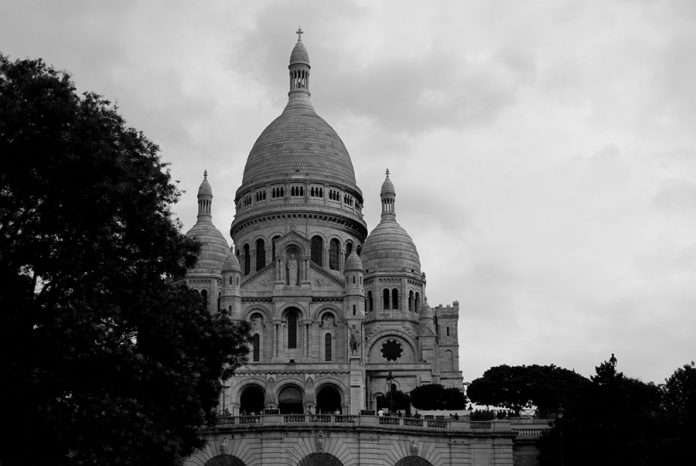The white domes of Sacré-Cœur Basilica sit at the highest point in Paris, crowning the hill of Montmartre. The views from the steps are among the best in the city. Entry to the basilica is free, making it one of Paris’s most visited landmarks.
Visiting Information
Address: 35 Rue du Chevalier de la Barre, 75018 Paris
Basilica hours: Daily 6:00am – 10:30pm
Dome hours:
- May-September: 8:30am – 8:00pm
- October-April: 9:00am – 5:00pm
Entry: Basilica is free. Dome costs €6-7.
Dress code: Modest dress required (no shorts, shoulders covered).
Getting There
Metro:
- Anvers (Line 2) – then walk up or take funicular
- Abbesses (Line 12) – closest, but involves stairs
- Pigalle (Line 2)
Funicular: From the bottom of the hill at Place Suzanne Valadon. Uses a normal metro ticket.
The walk up the hill takes 10-15 minutes from Anvers metro. Steps lead up through gardens with benches for resting.
What to See
The Basilica
Built between 1875 and 1914 as a symbol of national renewal after the Franco-Prussian War. The Romanesque-Byzantine style was unusual for Paris – the white stone (travertine limestone) exudes calcite when wet, keeping the building bright.
Inside, the main apse mosaic depicting Christ with outstretched arms covers 475 square metres – one of the largest mosaics in the world.
The Dome
Climb 300 steps (no lift) to the dome for 360-degree views of Paris. On clear days, you can see 30km. The dome is the second-highest viewpoint in Paris after the Eiffel Tower.
The Bell Tower
Houses “La Savoyarde,” one of the world’s heaviest bells at 19 tonnes. Cast in 1895 and donated by the Savoy region.
The Crypt
Currently closed to visitors.
Tips
- Best time: Early morning or late afternoon to avoid crowds
- Views: The terrace in front offers excellent city views even without climbing the dome
- Photography: Varies – check at entrance. No flash.
- Scams: Avoid “friendship bracelet” sellers on the steps – they tie string on your wrist then demand payment
- Accessibility: Wheelchair-accessible entrance at the rear (35 rue du Chevalier de la Barre). Dome not accessible.
- Mass: Daily services if you want to attend
Montmartre
Sacré-Cœur sits in the heart of Montmartre, one of Paris’s most distinctive neighbourhoods. Once a village of artists and cabarets, it retains a bohemian character.
Things to see nearby:
- Place du Tertre: Square with artists selling portraits and paintings
- Moulin Rouge: The famous cabaret (10-minute walk)
- Musée de Montmartre: Art museum in historic buildings
- Dalí Paris: Museum dedicated to Salvador Dalí
- Montmartre Cemetery: Final resting place of Degas, Truffaut, and others
- Au Lapin Agile: Historic cabaret from the artist era
- Rue de l’Abreuvoir: Picturesque cobbled street
Montmartre was home to Picasso, Van Gogh, Renoir, and Toulouse-Lautrec. Many locations from the film “Amélie” are nearby.
History
The basilica was built as an act of national penance after France’s defeat in the Franco-Prussian War (1870-71) and the Paris Commune uprising. “Montmartre” means “Mountain of the Martyr” – Saint Denis was supposedly beheaded here in the 3rd century.
Construction took nearly 40 years (1875-1914). The basilica has maintained perpetual adoration (continuous prayer) since 1885.















